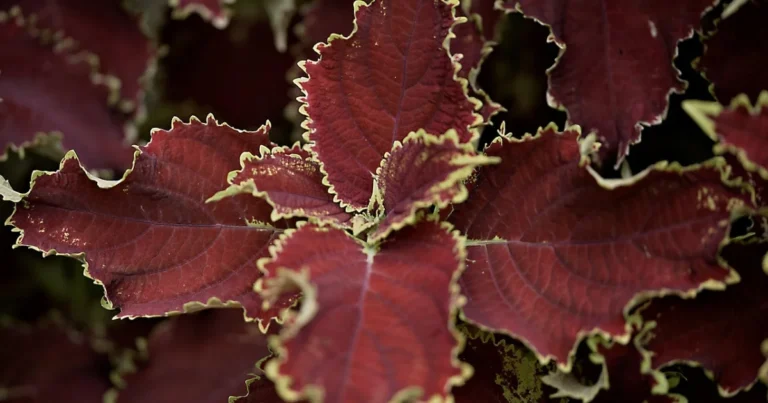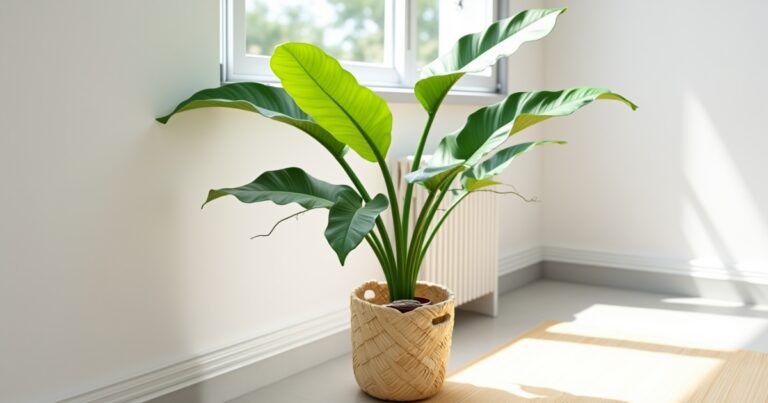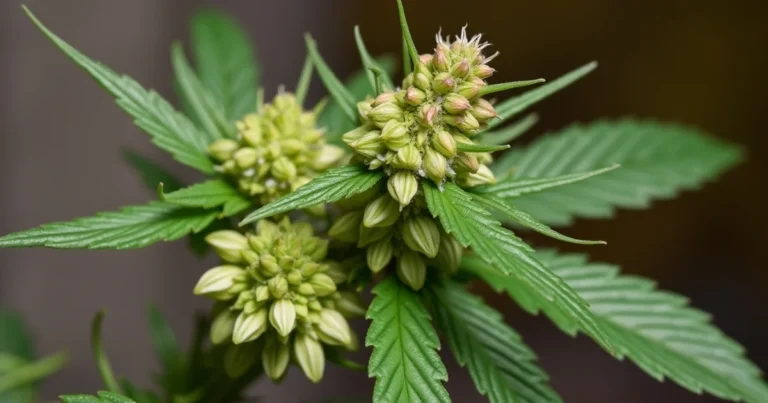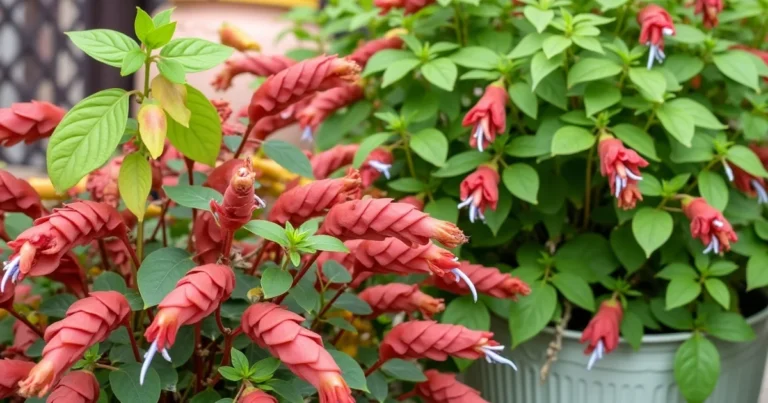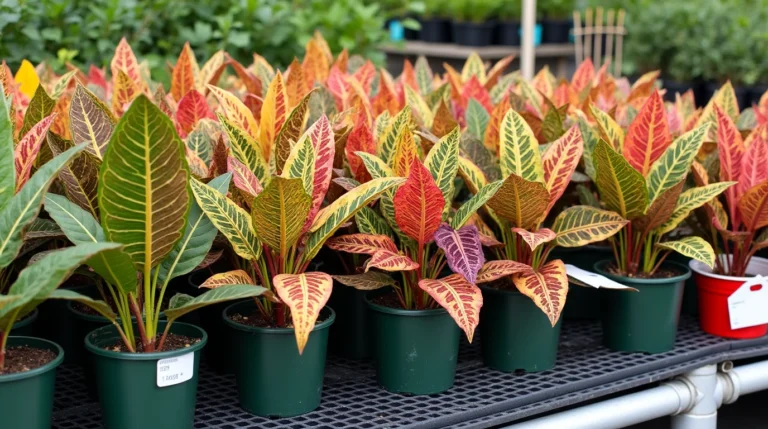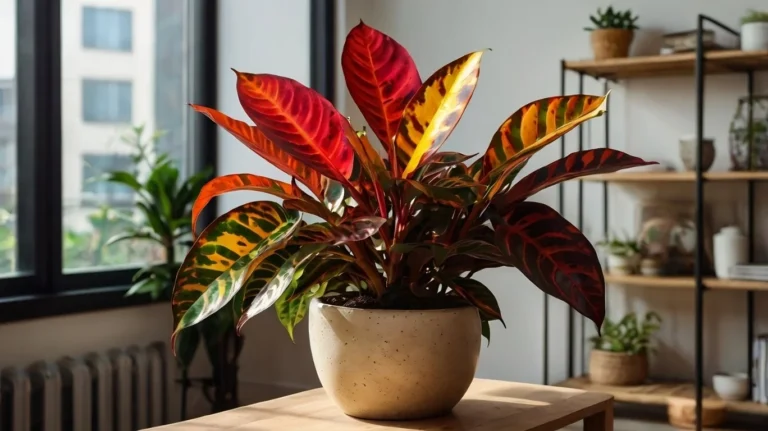Propagate Shrimp Plant with These 7 Proven Ways for Lush Growth

Want a thriving indoor garden? Discover how to propagate shrimp plant using truly effective techniques. This manual walks you through basic methods to multiply one plant. In this sense, you will have year-round fully vivid shrimp plants.
Shrimp plant propagation is not difficult; simply apply these guidelines. You will learn methods and instruments to increase development. Avoid frequent errors and produce a beautiful display. Ideal for novices, these techniques transform one plant into several, vibrating your area with life and colour.
Table of Contents
Introduction to Shrimp Plant Propagation
Including a shrimp plant in your house offers tropical flair and vivid color. Knowing how to spread this plant opens countless opportunities to enlarge your indoor garden. Knowing the fundamentals guarantees that your efforts, regardless of level of experience, pay off.
What is a Shrimp Plant?
Scientifically called Justicia brandegeeana, this tropical shrub gets its name from its arresting bracts that mimic little shrimp. Originally from Mexico, it grows in warm, humid surroundings and opens in clusters of red, pink, or white. It’s a unique complement to any room because of its long-lasting blossoms and rich foliage.
| Feature | Detail |
|---|---|
| Common Name | Shrimp plant |
| Scientific Name | Justicia brandegeeana |
| Origin | Mexico and Central America |
| Light Needs | Bright indirect light |
| Flowering Time | Summer to fall |
Benefits of Propagation for Your Indoor Garden
Growing your shrimp plant brings both aesthetic and useful benefits:
- Expand your collection: Turn one plant into several without having to buy fresh ones.
- Cost-effective care: Adopt a budget-friendly approach by mastering shrimp plant care techniques.
- Enhance decor: Use new plants to refresh spaces or gift to fellow gardeners.
- Resilient growth: Typically fit the surroundings of your house more so than others.
Every new plant you add improves the health of your indoor garden and honed your abilities. All set to learn how propagation streamlines daily tasks for maintaining shrimp plants? Let us begin to create your green haven.
Choosing the Ideal Environment for Shrimp Plant Growth
Caring for shrimp plants depends on starting with the correct surroundings. These tropical plants thrive indoors where they seem natural. Let’s investigate the components a space needs to be vibrant.
Lighting is absolutely essential. Put your plant next to a strong window facing indirect sunlight. Perfect windows are east- or north-facing ones. Direct sunlight burns leaves; too little light dulls the colors. A simple curtain will help to attenuate strong sunlight, therefore satisfying the requirements for your plant.
Important too are temperature and humidity. Shrimp plants favor damp air. Try for fifty to seventy percent humidity. In dry indoor environments, use a humidifier or pebble tray, and maintain temperatures between 65°F and 80°F (18–27°C) year-round. Steer clear of drafty areas close to air conditioning units or vents.
Important also are soil and drainage. Add perlite orchid bark to a mix that drains well. Don’t overwater; it stresses the plant. Water only when the top inch of soil feels dry. Accurate soil moisture assessment is made possible with a moisture metre.
| Factor | Ideal Conditions | Tips |
|---|---|---|
| Light | Bright, indirect sunlight | Rotate the plant monthly for even growth. |
| Humidity | 50–70% | Mist leaves daily in dry climates. |
| Temperature | 65–80°F (18–27°C) | Move away from windows in winter. |
| Soil | Well-draining mix | Repot every 1–2 years with fresh soil. |
Frequent inspections help to maintain your shrimp plant’s health. Weekly soil moisture checks should help you to change humidity with the seasons. Matching these components will help you to learn how to care for shrimp plants and appreciate vivid blooms all year long. Your plant’s health can be much improved by little adjustments in water or light. See how it responds and change as necessary.
How to Propagate Shrimp Plant: A Step-by-Step Guide
All set to learn how to spread a shrimp plant? This book dissectes it into easy steps. These guidelines will enable your new plants—golden shrimp plants or others—to flourish properly.
Preparing Your Shrimp Plant for Propagation
Starting with a grown, healthy parent plant, To stop infections, use sterilised shears. Have on hand sharp pruning shears, small pots, and a well-draining blend of peat moss and perlite. Because plants develop quickly in spring, it is the greatest season for propagation.
Detailed Propagation Techniques
Choose a method based on your plant’s size and health. Here are some options:
| Method | Action Steps | Best For |
|---|---|---|
| Stem Cuttings | Cut 4–6″ stems below a node. Strip lower leaves, dip in rooting hormone, and plant in moist soil. | Golden shrimp plant and tender stems |
| Division | Unpot the plant and separate root clusters. Ensure each division has roots and shoots before repotting. | Overcrowded golden shrimp plant or mature shrubs |
Aftercare and Monitoring for Success
Till fresh development shows, water sparingly. Mist once week to maintain humidity. Put pots under clear, filtered light; steer clear of direct sunlight. Check soil moisture frequently; roots should develop 4 to 6 weeks from now.
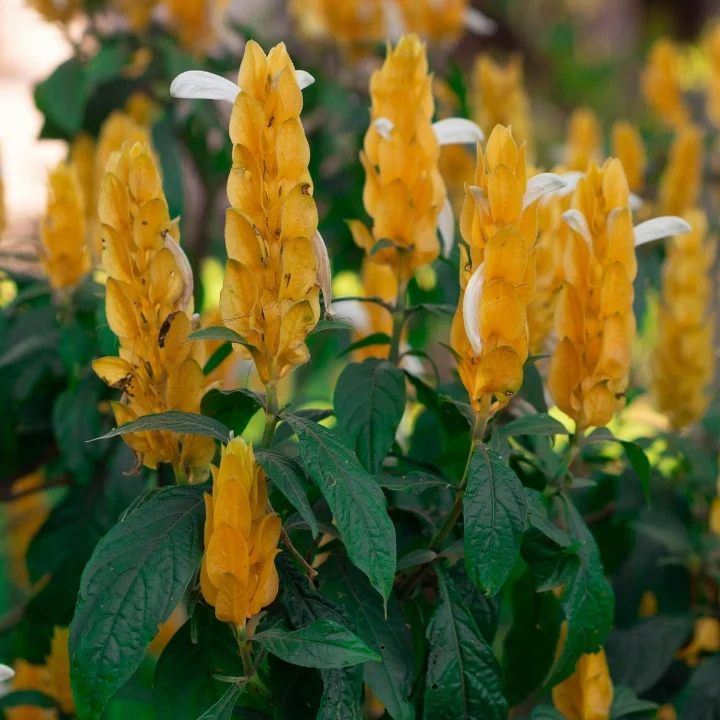
Essential Tools and Materials for Shrimp Plant Care
You need the correct tools if you want your yellow shrimp plant or shrimp bloom to be flourishing. Here’s what you need to enable your plant to flourish in rich and healthy state:
- Opt for containers with drainage holes to ensure excess water can escape. This stops your shrimp blossom from rotting roots-wise.
- A mix of peat moss and perlite—like Miracle-Gro Indoor Potting Mix—holds moisture but does not get overly saturated in well-draining soil mix.
- During propagation, clean cuts made with sterilized scissors or pruners benefit your yellow shrimp plant.
- Regular spritzes from misting spray bottles help to keep the foliage of the shrimp flower moist in dry indoor settings.
- For consistent growth, use a 10-10-10 NPK solution diluted to half-strength as balanced liquid fertilizer.
- Grow lights (optional): Extra illumination guarantees your shrimp plant receives enough in gloomy environments.
Keep in mind that gloves will help to shield your hands. These tools cooperate to meet the requirements of your shrimp plant. From long-term health to propagation, appropriate tools really make a difference. Your shrimp flower will thank you with strong green-and- pink blossoms and sturdy leaves.
Troubleshooting Common Challenges in Shrimp Plant Propagation
Prawn plants can run into issues during propagation even with the correct care. Maintaining the health of your plants depends on early identification of these problems. The following guides help you to spot and resolve typical issues:
Identifying Early Signs of Propagation Issues
Watch for these warning signs:
- Usually indicating too much or too little water, soft, drooping leaves indicate wilting.
- Brown margins can indicate nutrient problems or too much sunlight, yellowing tips.
- If roots grow slowly, it could be from improper temperature or bad soil.
Effective Remedies for Stressed Shrimp Plants
Fix issues with these simple steps:
- Let the ground dry somewhat in between waterings. Test wetness using a finger.
- Remove discolored and damaged leaves to boost overall plant health.
- Check drainage, repot for improved air and moisture in a mixture of perlite and peat moss.
Guard your shrimp plants against too high or low temperatures. Away from drafts and in indirect light. Should spider mites show up, wash your leaves with a light soap. Your shrimp plants will bounce back and flourish with fast action and patience.
Expert Tips for Long-Term Shrimp Plant Maintenance
Pay special attention to the requirements of your justicia shrimp plant or red shrimp plant to maintain it healthy. Use these easy guidelines to guarantee your plants remain vibrant and healthy all year long.
Optimizing Light and Water Conditions
Track how your plant responds to water and light. For justicia prawn plants:
- Put them under brilliant, indirect light. Windows with east faces are ideal.
- Water 1 to 2 inches down below dry soil. Insufficient foliage can cause drooping, while overwatering leads to root decay.
- Red shrimp plants prefer moist leaves, which weekly spraying helps to maintain.
Seasonal Care Techniques
Change your care routine with the seasons:
- Every month while they are growing, feed with balanced liquid plant food spring and summer.
- Fall: As growth slows down, water less. You should stop fertilizing by September.
- Winter: Keep plants free from drafts of cold. Water 2 to 3 weeks.
To inspire fresh development, remove yellow leaves. Weekly rotation of pots guarantees even light. Use these guidelines, and your shrimp plants will be a garden friend for many years.
Conclusion
Your home garden will be much improved by knowing how to propagate shrimp plants. Choose the correct location first, then apply good soil and keen tools. This will help you succeed.
Remember, new development depends mostly on keeping up with aftercare and gathering stem cuttings. Should you stumble into problems, there are guidelines for addressing light or moisture-related ones. Changing your maintenance for every season will assist your shrimp plant remain healthy all year long.
Track your development and then tell others about it. One could find great benefit in combining local plant groups or internet forums. From beginning to take care of your plant, every action you do brightens and greener your surroundings.
Try new ideas to transform your house into a verdant haven. Happy growing!
FAQ
What is a shrimp plant?
A shrimp plant is a tropical perennial sometimes called Justicia shrimp plant or a shrimp bloom. Its unusual, tubular blooms resemble those of a shrimp. Many people enjoy these plants since they provide your indoor garden vivid color.
How can I care for a shrimp plant?
Give a prawn plant bright, indirect light to look after. Ensure the soil stays adequately moist without becoming saturated. To promote better growth, also guarantee appropriate humidity and schedule regular pruning.
How do I propagate a shrimp plant?
A shrimp plant can be grown from division or stem cuttings. Take a healthy cut using at least two sets of leaves for stem cuttings. Let it callous for a few hours then place it in well-draining ground. Water it lightly; until roots develop, keep it in a humid environment.
What are the different types of shrimp plants?
Among the various varieties of shrimp plants are golden, red, and yellow ones. Great for indoor gardening, each has unique floral color and growing pattern.
How should I monitor my shrimp plant after propagation?
Watch the soil moisture after spreading your shrimp plant and search for fresh growth. Key for effective rooting and growth are enough light and humidity.
What challenges might I face in shrimp plant propagation?
Typical problems include low humidity’s withering, too much water causing root rot, and insufficient sunshine. Early identification of these issues will enable you to address them, much as changing the location of the plant for better light or watering schedule.
Can I use any specific fertilizers for shrimp plant care?
Definitely! During the growing season, apply a balanced liquid fertilizer at half the recommended strength for optimal growth. Be cautious, though, not to overfertilize since it can damage your plant.
How often should I water a shrimp plant?
Water your shrimp plant only when the top inch of soil dries out. Your surroundings will determine how often you need water, but generally speaking, once a week is plenty during the growing season.

